Research Updates
2024-2025 Cohort
ON-RaMP in the 1st Mid-South SICB Meeting
The University of Tulsa hosted the first Mid-South SICB (Society for Integrative and Comparative Biology) meeting, this past October 19. This event brought together researchers and educators from Missouri, Kansas, Texas, Arkansas, Oklahoma and beyond. The mission of SICB is to foster research, education, public awareness and understanding of living organisms, from molecules and cells to ecology and evolution.
A couple of mentees were giving their first poster presentations, and we were all excited to see them in action! Mentors also gave talks and showed support for mentees.
This is one of the many opportunities that our students have during the ON-RaMP program to do networking, attend conferences and have their first experiences presenting their work.
We are proud of our mentees Aryanna Carr and Juliana Swanson, who achieved this first milestone! We can't wait for more to come for all our mentees!
Mid-South SICB MeetingOctober 19, 2024, Tulsa, OK
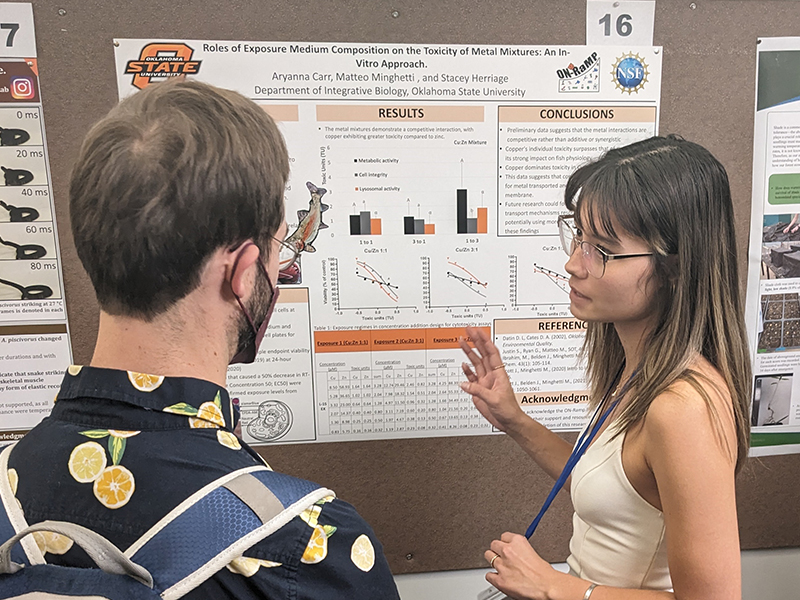

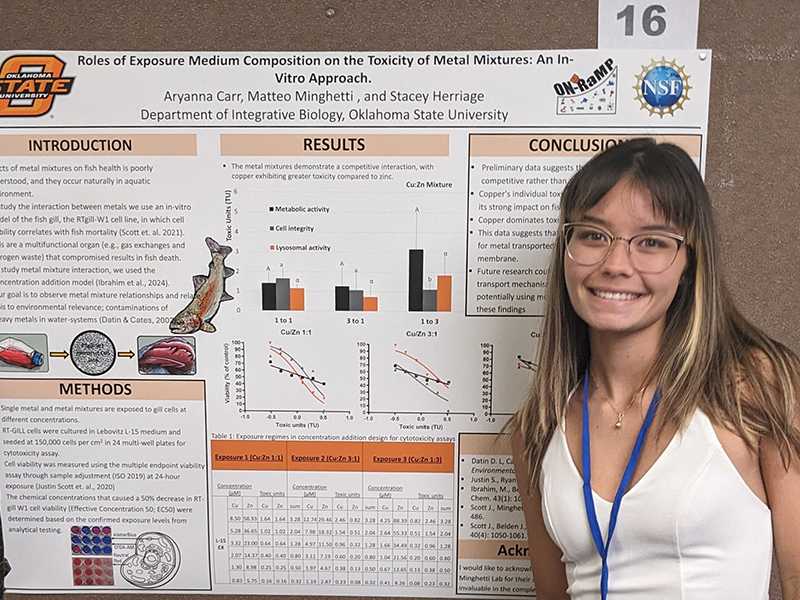

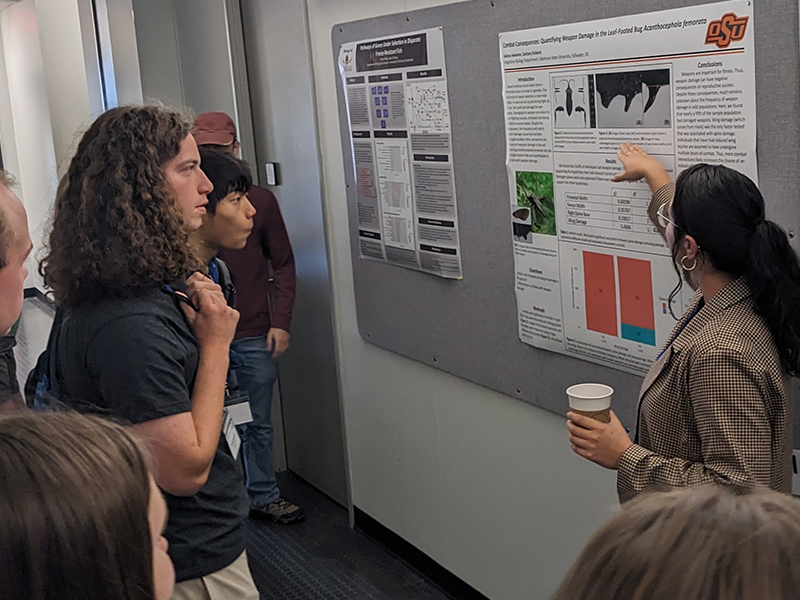

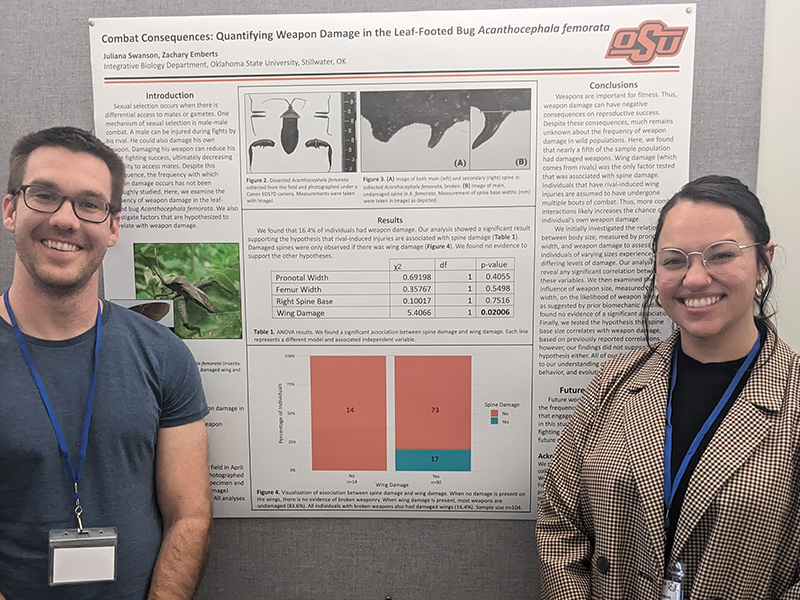

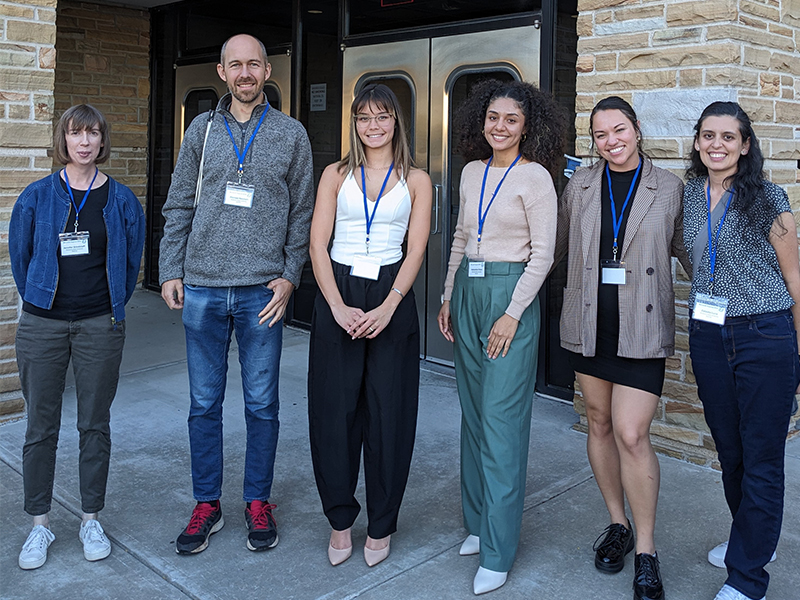

2023-2024 Cohort
Impact of Temperature Variation on Color Polymorphism and Behavior in Grasshoppers
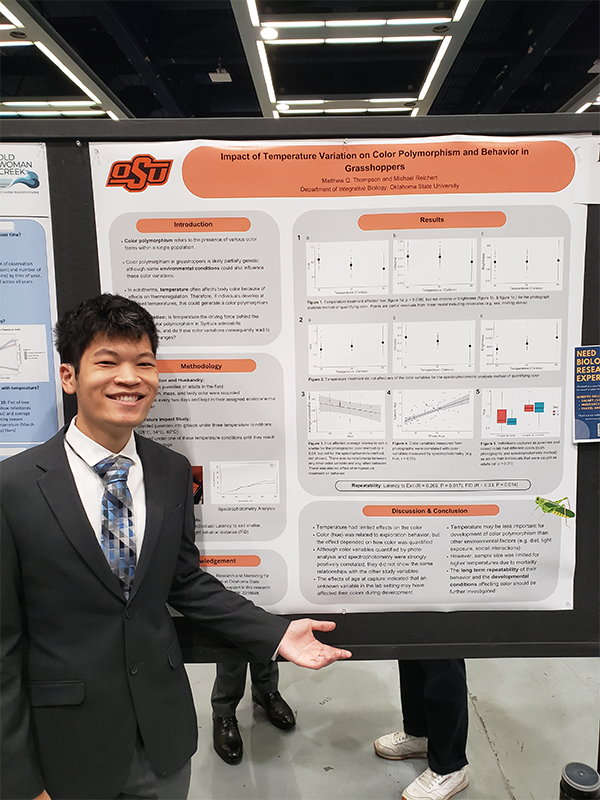
Dr. Reichert and I are investigating the effects of temperature on the color polymorphism of Syrbula admirabilis grasshoppers and consequently the effects of their color morph form on their behavior. The goal is to enhance understanding of the environmental effects on color polymorphism mechanisms and underlying causes for color changes. According to compiled spreadsheet data, we found that temperature is only weakly correlated with color frequency in color polymorphism, a contrast to what was originally predicted. Additionally, color morph form is weakly correlated with observable behaviors. However, our most notable finding is that juveniles caught in the wild, and then matured to their adult stage, tend to be brighter in color when compared to adults caught in the wild. This suggests potential developmental effects which necessitate further investigation in future research.
Dr. Michael Reichert's Lab
Modeling Cross Timbers Habitat Fragmentation Using Escheria coli and Caenorhabditis elegans
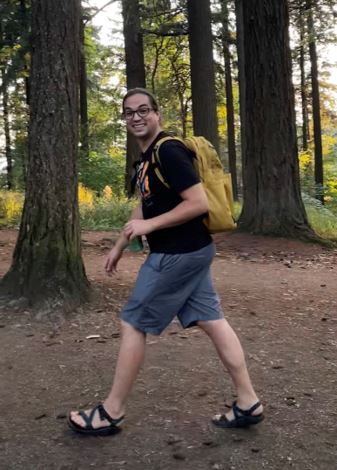
The overall goal of my research is to bring ecological fragmentation studies to the laboratory using an innovative approach that merges the use of geospatial software like ArcGIS and Google Earth Engine and a culturing technique using Escheria coli and Caenorhabditis elegans. I am attempting to replicate some of the difficulties species encounter living in bioregions like Oklahoma’s Cross Timbers due to habitat fragmentation. This technique shows promise for predictive studies to determine the potential impacts of impervious surfaces and urban development, and may even help in the development of mitigation strategies to reduce overall harm. The process of 3D printing maps is ongoing. These 3D prints will be used to stamp agar plates with E. coli and introduce C. elegans to act as stand-ins for a generic species. We suspect that the increased fragmentation of the maps will have measurable impacts on the reproductive capability of C. elegans.
Dr. Bo Zhang's Lab
Rose Rosette Disease and Breast Cancer EDNA
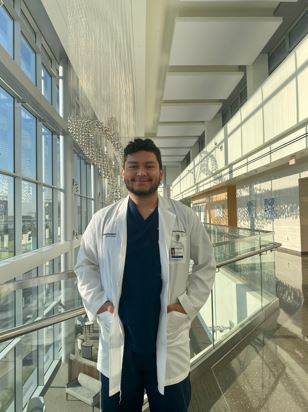
Our lab is currently working on two major projects. The first project addresses the widespread Rose Rosette disease that is continuing to devastate roses across the Midwest. The team is seeking to develop new diagnostic procedures, produce disease resistant strains, and increase public awareness. Most of my time, however, is spent on the Breast Cancer EDNA project. I am attempting to translate MIFI software that was originally used to detect plant pathogens for human medicinal use. Since every species uses the same four nucleotides in their DNA (A, T, C, or G) and the e-probes are made from these nucleotides, theoretically MIFI can be used to detect all kinds of things including mutations in human DNA that can result in cancer. Right now, we are focusing on the BRCA1 gene which is the most well-known and studied breast cancer gene. However, after we have successfully created a proof of concept, we will expand our e-probe library and make EDNA's for other genes associated with breast cancer. Given enough time, we intend to expand our focus to encompass other forms of cancer.
Dr. Ochoa-Corona's Lab
Management of Water Resources in Ecosystem Transition Zones
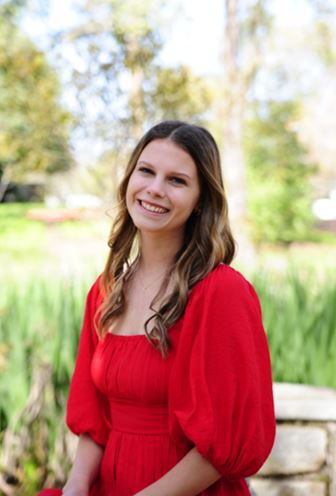
Dr. Zou and I are investigating the ecosystem sustainability of different watersheds within the ecosystem transition zone of the Great Plains. This zone is characterized by deciduous oak forest, savanna, and tallgrass prairie; however, it is experiencing woody encroachment by eastern redcedar, creating a novel agroecosystem. Our goal is to measure annual net primary productivity, biodiversity, soil health, carbon sequestration, water quantity, and water quality for each watershed, create a sustainability index approach, and evaluate the data using this approach to determine the sustainability of each agroecosystem. This will allow us to make conclusions regarding the management of these systems, specifically for eastern redcedar encroachment.
Dr. Zou's Lab
Currently, I am processing runoff samples, weighing them following collection from the field, drying, and weighing them again to determine sediment yield. I am also processing soil samples collected from each watershed at various depths to determine their pH and texture. Additionally, I have visited our sites a few times at the Cross Timbers Experimental Range to assist in fieldwork. When I am not in the lab or in the field I am exploring the literature base, developing my own manuscript, and analyzing data using RStudio.
Dr. Zou's Lab
The Effects of Noise Pollution on Sound Localization and Processing in Wild Rodents

Currently our lab is fine-tuning our method for trapping and collaring prairie voles. We will be partnering with UCO's Selman Living Lab to capture voles and map their movement through their burrows. In my day to day work I assist with mouse care, running HRTF (Head-Related Transfer Function) tests, preparing specimens, and studying the literature base to ensure that I am up to date on various practices and procedures.
Dr. McCullagh's Lab
